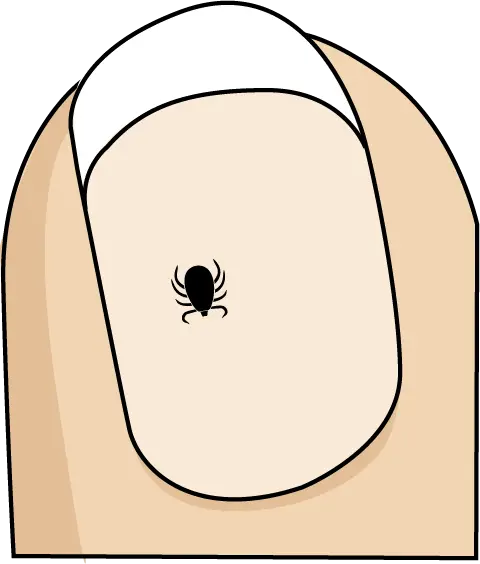Check for ticks
Check for ticks
This page provides some helpful information on ticks, how to identify them and how to remove them quickly and safely.
What are ticks?
Ticks are small spider-like creatures found throughout the UK. They are most common in heathland, moorland and woodlands, but can also be found in parks and gardens. Young ticks can be as small as a poppy seed, whilst older ticks look like tiny spiders.
An unfed adult female tick is around 3 mm long and is small, oval and flat. After feeding, female ticks can grow to up to 10 mm long. Males are smaller, at around 2.5 mm, and the nymphs smaller still, at around 1.5 mm.
Ticks feed on other animals – usually deer and sheep. Occasionally, they feed on us too! Ticks are most active between March and October.
Why can ticks be a problem?
Ticks can sometimes pass on disease to humans, including Lyme disease. Not all ticks carry disease and removing them quickly and safely greatly reduces any risk of illness.
What should I do?
Keep enjoying the outdoors! Just remember to check for ticks afterwards and pay special attention to these key areas:
- In and around the hair and ears
- Under arms
- Inside belly button
- Around waist and back
- Between legs and back of knees
- Feet and between toes

What do I do if I find a tick on me?
- Don't panic!
- Remove the tick as soon as possible
- The safest way to remove a tick is to use a tick removal tool, which can be found in many outdoor shops, chemists and vets
- After removing the tick, clean the bite area with hot soapy water or an antiseptic wipe
How to use a ‘tick twister’ tool
Use a tick removal tool to engage the tick from the side. Lift the hook very lightly and turn until the tick detaches.

Tick removal tools come in a variety of shapes and sizes. Follow the manufacturer’s instructions for the specific tool.
Remember!
Don’t cover an attached tick with perfume, alcohol, vaseline or other chemicals, and never use heat (e.g. using a match). This can make the tick more likely to pass on disease.
What to look out for
Keep an eye on the bite site. If a spreading circular ‘bullseye’ rash develops, or you feel unwell with flu-like symptoms, tell your doctor you've been bitten by a tick. (Note: A small, itchy spot is a normal reaction to a tick bite).
Lyme disease and other tick-borne diseases can be treated with a course of antibiotics and in some cases other medication, but acting quickly is important for the best outcome.
Anything else I can do?
You're less likely to pick up a tick if you:
- Keep to clearly defined paths
- Avoid dense vegetation
- Use insect repellent
- Cover up exposed skin
Find out more
For more information, visit the NHS Inform website.


